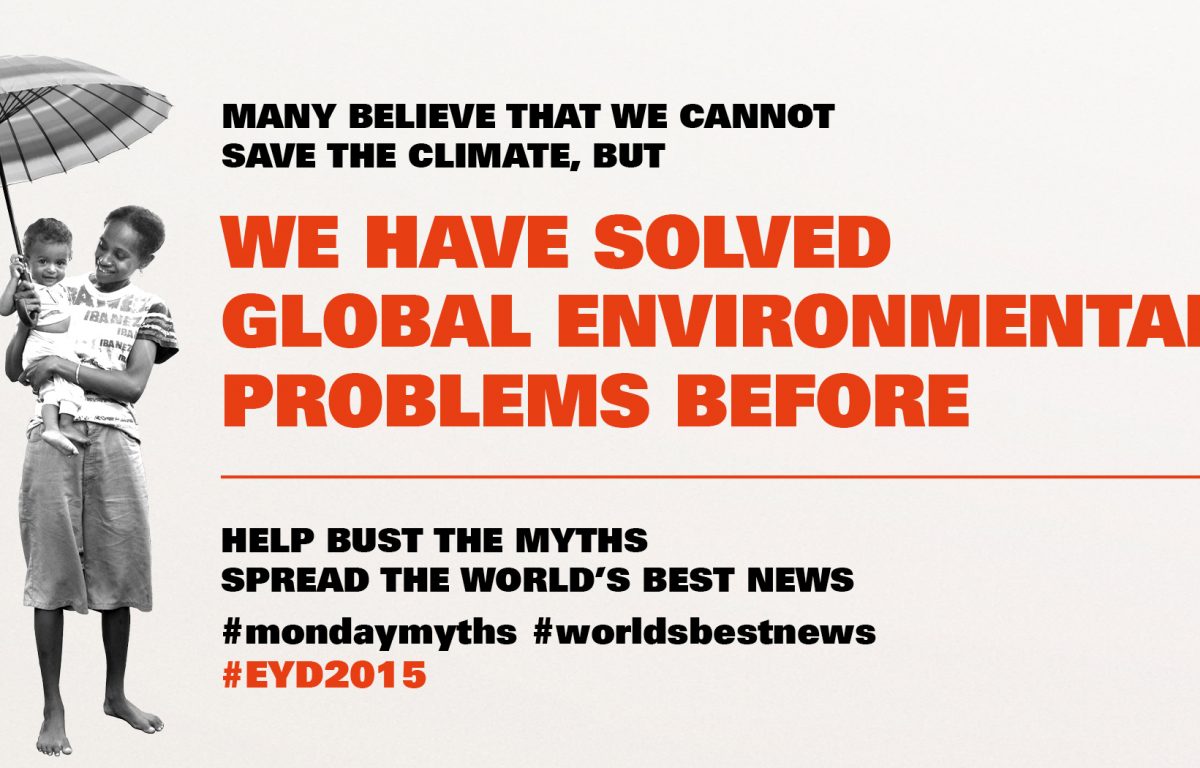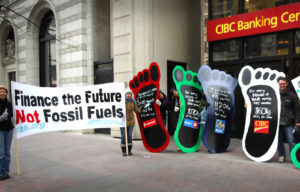
WBN
We can solve big environmental problems
Nine in ten Danes are worried about climate change, and one in five do not believe that humanity can do much about it. But history shows that the countries of the world have previously managed to solve big environmental crises.
Share
How to solve climate change
Even though climate change is now ongoing and can no longer be completely averted, we still have the chance to avoid the worst consequences, according to the latest report from the Intergovernmental Panel on Climate Change (IPCC).
The world’s average temperature has already risen by about 0.85 degrees Celsius, and if we stopped all CO2 emissions tomorrow, we would still end up with a global warming of about 1.5 degrees compared to pre-industrial levels. This is due to the gases that we have already emitted.
But the IPCC points out that we still have the option to keep temperatures from rising more than 2 degrees Celsius. This will still have big consequences for nature and humanity, but the damage will be less than if we don’t do anything.
The 2 degree solution requires that we reduce the emissions of the problematic gases by 40-70 percent before 2050, and then continue to reduce emissions further until 2100.
Other categories
Even though Denmark is among the most climate-conscious nations of Europe, less than half of Danes consider the climate when they go to vote, and more than one in five do not believe that humanity can do anything to solve the problem. These are some of the findings from the latest annual surveys conducted by Concito, a Danish think-tank specialising in environmental issues.
But based on lessons learnt from decades of struggling with environmental problems, it seems that the countries of the world can accomplish a lot in a short time, when they manage to work together.
Global unity saved the ozone layer
Many now have forgotten that the ozone layer used to be one of the biggest worries back in the eighties. The atmosphere’s ozone levels were dropping fast, and nobody knew why. If the ozone were to disappear completely, it would be disastrous, since this thin layer of gas serves as a natural shield against the sun’s harmful ultraviolet radiation. The ozone layer became so thin in an area over the South Pole that it became known as the ‘ozone hole’, and the size of this area kept growing.
In 1987 scientists managed to prove that the problem was caused by mankind. The ozone layer was breaking down because of emissions of the so-called CFC gasses that used to be essential for the production of refrigerators and deodorants. Already the following year, the countries of the world agreed to stop using the harmful gases. Little by little, the world turned down the emissions, until they finally stopped using CFC-gases in 2010.
It seems this coordinated approach has been successful, according to the American space agency, NASA, which has been using satellites to monitor the ozone hole. In 1979, the hole had an area of 1.1 million square kilometres, and it grew rapidly in the following years, until it reached a maximum of 29.6 million km2 in 2006. But since then, the ozone hole has stopped growing, and it is now slowly shrinking. In 2014, it had a maximum size of 24.1 million km2.
The ozone layer is healing slowly, because the gases that break down ozone remain active in the atmosphere for a very long time. This means the ozone hole will remain in place over Antarctica for years to come, due to the gases that we have already emitted. The problem is not completely solved yet, but a world-wide disaster seems to have been averted, and the world is now on track to fix the ozone layer by the middle of this century.
Action stopped acid rain
The so-called ‘acid rain’ was another big environmental issue in the eighties. Exposed to pollution from cars, industry, and power plants, the rain turned into a weak acid. The consequences quickly became obvious in Europe: In Sweden, forests started to wither, as dead fish began to surface in the lakes. Meanwhile, the acid rain also caused damage in populated areas. In Denmark, the Ministry of the Environment estimated that by 1984, annual acid damage to the country’s buildings cost the equivalent of 134 million euros.
The acid rain did not come as a surprise. Since the sixties the problem had been apparent, but it took time to prove scientifically that air pollution is able to spread over large distances. Hostility and mutual suspicion during the Cold War delayed diplomacy even further, but finally in 1979, 34 countries managed to reach an agreement. Among them were the United States, the Soviet Union, and many European countries. They signed the Convention on Long-Range Transboundary Air Pollution, which started to reduce emissions of sulphur dioxide from 1985. This was an important step, because sulphur is one of the main causes of acid rain. The convention has since been further expanded eight times with new protocols, which also restrict emissions of other pollutants.
In 2007, the United Nations’ Economic Commission for Europe conducted an evaluation of the effects of the convention, and concluded that air pollution of all kinds have been reduced since the convention entered into force. Europe now only emits a fifth of the sulphur that we emitted in 1980. Acid rain has been reduced dramatically, and this has been good news for the forests and lakes.
In 1980, 43 percent of the area of Europe was subjected to a critical levels of acidity, but in 2010 this number had dropped to seven percent, and acid levels are expected to continue to decrease. However, some problems remain, for example emissions of nitrogen and particle pollution. In 2010, the convention was updated to also restrict particle emissions of soot.
Good gasoline led to less lead
Lead pollution has been another big environmental problem, despite the consequences being much less visible than the dead forests caused by acid rain. Lead is a toxic heavy metal that damages the nerve system, and little children are especially vulnerable. But also in this case, the countries of the world have made great progress to solve the problem. The convention on air pollution was updated in 2003 to also reduce emissions of heavy metals such as lead and mercury.
In addition, nearly all countries of the world have now switched to unleaded petrol, with the exception being six relatively minor countries. According to the WHO, this has meant substantially less lead in the air worldwide. In Denmark, the air’s lead content has dropped to one tenth of what it used to be from 1978 to 1992. However, there are also other sources of lead pollution, for example old water pipes and in paint, as well as emissions from industry. Even though we have come a long way, WHO estimates that high exposure to lead continues to be a problem in some developing countries, especially in South East Asia.
Climate solution needs cooperation
Today, there’s not a lot of focus on the old problems of acid rain, ozone holes and lead pollution. Climate change has taken centre stage as the number one global worry. Despite decades of negotiations, carbon dioxide emissions are at record highs, and atmospheric levels of CO2 keep increasing, causing the world to heat up. Global warming was noticed in the eighties, when we started to solve the other great pollution challenges. But whereas the other problems are now well on their way to be solved, not much has happened to solve climate change. A series of international summits have come and gone without tangible results.
In order to work together to solve a common problem, it’s necessary to first acknowledge that there is a problem to begin with. The vast majority of scientists are now convinced that climate change is real, and that human activities are the root cause. But only half of Europeans believe that climate change is one of the world’s most serious problems, according to an official EU survey from 2014. The survey also shows that only one in ten Europeans think that there is a common responsibility to solve the problem.
But there is also positive news. The International Energy Agency (IEA) finds that the world, and especially Europe, has become much better at using energy efficiently. According to the IEA, this is one of the main reasons why 2014 was the first year ever that did not see an increase in the emissions of CO2, even though the world economy was growing. This provides some hope that it is possible to maintain economic growth while reducing CO2 emissions.
In the ‘Western’ world, the use of renewable energy is increasing, which has now taken second place after coal. In the United States, president Barack Obama has recently launched a plan to reduce CO2 emissions from the nation’s power plants by nearly a third over the course of 15 years. This happens as part of the preparations for the big climate summit COP21 in Paris this December, where the world’s nations will once again make an effort to agree on concrete steps to combat climate change.
Even the Pope has now entered the climate discussion, urging the world’s 1.2 billion Catholics to create an ethical green revolution:
“Climate change is a global problem with grave implications […] A technological and economic development which does not leave in its wake a better world and an integrally higher quality of life cannot be considered progress,” Pope Francis recently wrote in the latest official guidance from the Catholic Church.







